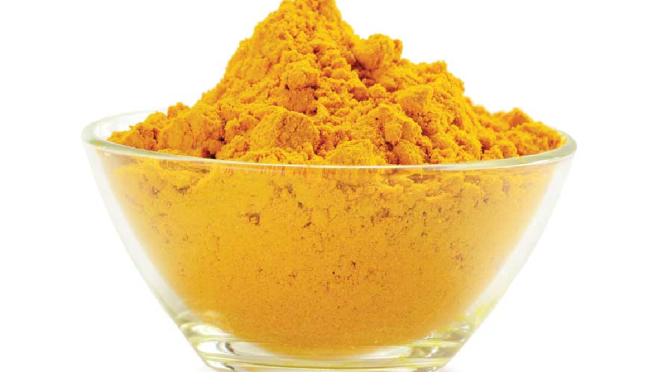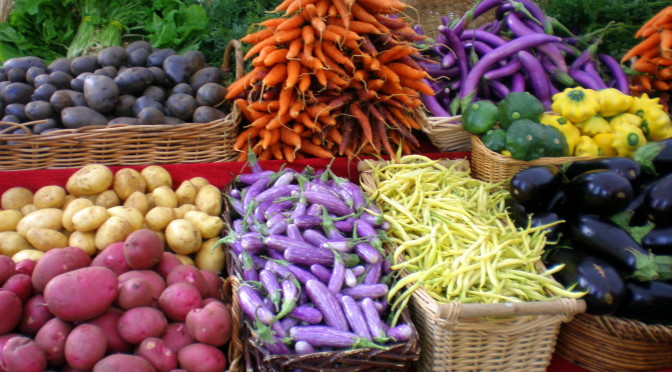From Mrs. Cog's Corner
The content on this page is for discussion purposes relating to health and well being only and is not intended to be medical advice. Links and sources provided are for informational purposes and do not represent an endorsement of a person, product or treatment.
Turmeric is just amazing and has so many qualities and benefits that trying to describe them all here would be indeed re-creating the wheel. Yet, I think I would be remiss if I did not examine a few spokes. Previously, I published this page with just a fraction of the information here now, and it's high time I went back and detailed the extreme benefits from this natural substance.
The ancient healing practice of Ayurveda, from India, has more than 5,000 years of knowledge in the use of turmeric. A good description and history can be found here. Evidence shows that Traditional Chinese Medicine has also made use of this healing spice for as far back as history goes..
The active ingredient in turmeric is curcumin. With powerful anti-inflammatory proponents, it has been used for thousands of years to treat arthritis, swelling and sprains. Curcumin has been proven to have anti-cancer properties and multiple studies (see links below) have shown it's ability to stop and reverse the growth of tumors. It contains powerful immune boosting traits and studies have found it effective in the battle with Alzheimer's and dementia.
The versatility of turmeric makes it available in many forms. In cooking turmeric is found in the blend of spices that make curry. There are also supplemental capsules and powders and essential oils. The many advantages of working turmeric into your daily routines is well worth the time researching it.
One important note: per clinical studies your body will absorb the turmeric at 20 times (that's 2000%) more effectively if taken with black pepper (aka bioperine). Many curcumin supplements now contain a blend with bioperine. This blended supplement was actually the same brand used in the very successful cancer testing at University of Texas MD Anderson Cancer Center whose links are listed below. Likewise, I mix black pepper essential oil with my turmeric oil blends for daily skin toning and many other health benefits.
More information:
Turmeric is one the most thoroughly researched plants in existence today. Its medicinal properties and components (primarily curcumin) have been the subject of over 5600 peer-reviewed and published biomedical studies. In fact, our five-year long research project on this sacred plant has revealed over 600 potential preventive and therapeutic applications, as well as 175 distinct beneficial physiological effects. http://wakeup-world.com/2013/05/26/science-confirms-turmeric-as-effective-as-14-drugs/
A promising new study published in Cellular Physiology and Biochemistry titled, “Dietary Curcumin Ameliorates Aging-Related Cerebrovascular Dysfunction through the AMPK/Uncoupling Protein 2 Pathway,”[i] reveals the primary polyphenol in turmeric known as curcumin (which gives it its golden hue) may provide what the study authors describe as an “effective therapeutic strategy to reverse age-related cerebrovascular dysfunction.”
On April 21, 2011, the University of Texas MD Anderson Cancer Center, top Western medicine abandoned it's normal research for new toxic chemo solutions for cancer to release a surprising paper on their curcumin research. The researchers were amazed at curcumin's ability to differentiate cancer cells from normal cells and create apoptosis (cell death) in cancer cells only, while actually promoting better cellular health in non-cancerous cells. http://www.naturalnews.com/037879_curcumin_cancer_cells_turmeric.html
If the herb or spice you're looking for is processed or not organically grown, you risk missing out on their most potent active ingredients, which provide you with optimal benefits. If the herb or spice isn't cultivated, harvested, produced, and packaged using certified organic processes, you could be robbed of its healthful active ingredients. http://organicindia.mercola.com/herbal-supplements/turmeric.aspx
Nothing can replace exercise, but turmeric extract does a pretty good job of producing some of the same cardiovascular health benefits, most notably in women undergoing age-associated adverse changes in arterial health. http://wakeup-world.com/2013/06/09/turmerics-cardiovascular-benefits-found-to-be-as-powerful-as-exercise/
In traditional Chinese medicine turmeric has been used to aid digestion and liver function, relieve arthritis pain, and regulate menstruation. Turmeric has also been applied directly to the skin for eczema and wound healing. Today, turmeric is used for conditions such as heartburn, stomach ulcers, and gallstones. It is also used to reduce inflammation, as well as to prevent and treat cancer. http://www.news-medical.net/?tag=/Turmeric
Curcumin Clinical Studies: http://www.jivaresearch.org/Curcumin.php
Extensive index of curcumin and cancer research studies at MDAnderson: http://explore.mdanderson.org/search?site=my_collection&client=my_collection&output=xml_no_dtd&proxystylesheet=my_collection&q=curcumin
Given all the research and the absence of many diseases and conditions in the cultures which have historically consumed curcumin, it’s a good idea to add this to your diet. My own research has revealed that curcumin may not be readily absorbed due to the hostile environment of the GI tract. Some suggestions I have come across on increasing its bio availability are: 1) Take it with the black pepper extract ‘bioperin.’ This is supposed to improve the bio availability 100 fold. http://www.ecoyardfarming.com/health/amazing-benefits-of-curcumin/
A link that takes you to the In-Depth Nutritional Profile for Turmeric, featuring information over 80 nutrients, can be found under the Food Rating System Chart. http://www.whfoods.com/genpage.php?tname=foodspice&dbid=78
Turmeric grows wild in the forests of South and Southeast Asia. It's one of the key ingredients in many Pakistani, Indian, Persian and Thai dishes and has incredible medicinal value, too. http://www.mindbodygreen.com/0-6873/25-Reasons-Why-Turmeric-Can-Heal-You.html
To say Tom Newmark is passionate about turmeric is an understatement. He’s farmed the herbaceous plant to understand its inner workings. He’s traveled the globe to meet with researchers studying how it affects the inner workings of the body. It’s all been in an effort to confirm what people for thousands of years have believed: that turmeric is good for you. Very good for you. http://www.organicgardening.com/living/turmeric-s-healing-powers
Turmeric's primary active component is a molecule called curcumin, a powerful antioxidant. It is possible to purchase this component as a standalone supplement. Other organic compounds in turmeric have been found to offer anti-fungal and general antibiotic value. A number of studies are also pursuing turmeric as potentially being part of a natural cure for various cancers. When taking turmeric as a health aid, it should be remembered that curcumin is substantially more bioavailable when taken along with a bit of black pepper. http://www.earthclinic.com/Remedies/turmeric.html
The antioxidants in Turmeric fight atherosclerosis by deactivating platelet-activating factor (PAF). This protein seals leaks in blood vessels by stimulating the growth of a protein “net” on which a cholesterol plaque can form. Curcumin in Turmeric helps prevent hardening of the arteries in people who have diabetes, and also helps stop the loss of protein through the kidneys. In the laboratory, the antioxidants in turmeric kill cultures of cancer cells from the skin, bloodstream, and ovaries. http://wellnessmama.com/5297/herb-profile-turmeric/
The activities of turmeric include antibacterial, antiviral, anti-inflammatory, antitumor, antioxidant, antiseptic, cardioprotective, hepatoprotective, nephroprotective, radioprotective, and digestive activities. Phytochemical analysis of turmeric has revealed a large number of compounds, including curcumin, volatile oil, and curcuminoids, which have been found to have potent pharmacological properties. http://www.ncbi.nlm.nih.gov/books/NBK92752/#ch13_sec12
Do you have a jar of turmeric languishing in your spice cupboard? Or perhaps you're looking for ways to add it to your diet in response to all the recent studies indicating its health-promoting and disease-preventing properties. Turmeric has long been a staple in Indian curries as well as in foods like mustard (it provides that golden yellow color!), but there are lots of other ways to eat and drink this spice. Here are seven easy ideas. http://www.thekitchn.com/7-ways-to-eat-drink-turmeric-198696
In order to make the most of turmeric, you must take it with a bit of fat. With curry (where turmeric is most popular), your body is able to make the most of the curcumin because there is usually some oil in the recipe. We can learn from this by trying to take turmeric as part of a healing synergistic whole—one healing piece of an overall healthful meal. http://consciouslifenews.com/optimize-turmeric-absorption-super-boosted-benefits/
Do you suffer from inflammation, sore joins, menstrual cramps or even want to repair your muscles faster after yoga or a really good workout? If you answered yes to one or more of these questions, boy do we have a cocktail for you! I first started “shooting” coconut water and turmeric because I was experiencing painful cramps, but the more I did it, the more people I would encounter who were using turmeric every day to recover faster from yoga and reduce inflammation as part of their routine. http://www.youngandraw.com/reduce-inflammation-with-a-turmeric-cocktail/


